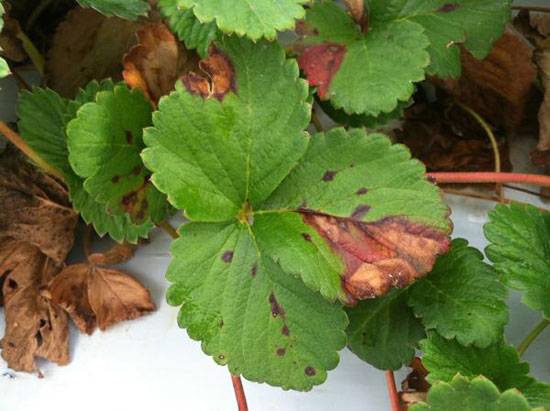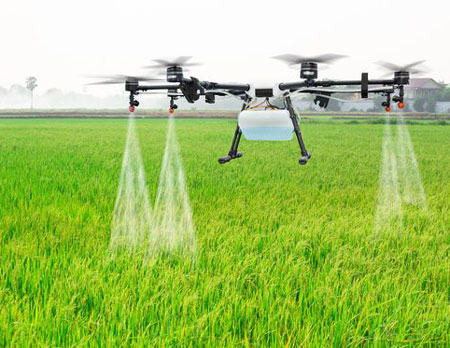Strawberry
Phomopsis leaf blight

Phomopsis obscurans
Fungal Disease

Phomopsis obscurans
Fungal Disease

Phomopsis obscurans
Fungal Disease
Phomopsis leaf blight is a significant disease affecting strawberry plants. Young leaves are highly susceptible, and extensive defoliation can occur, with lesions of various sizes coalescing to form large, triangular blighted areas. The disease can also weaken older leaves in perennial plantings, resulting in reduced yields the following year.
Symptoms and Signs:
Lesions on Leaves: Reddish-purple spots, ranging from ⅜ to ½ inch in diameter, develop on strawberry leaflets. These spots enlarge into V-shaped, blighted areas defined by major leaf veins. The lesions typically have a dark brown central zone, surrounded by a lighter brown zone, with an outer ring of purple, red, or yellow. Numerous pycnidia (fungal structures) develop in the center of the spots.
Defoliation and Plant Impact: In severe cases, the lesions can cause extensive defoliation. Entire leaves may be blighted, leading to decreased nursery yields. The pathogen also infects runners and daughter plants, further reducing productivity.
Spread and Infection: The pathogen likely originates from nearby plant species and spreads to strawberry nursery fields. It can infect not just leaves but also petioles, stolons, calyxes, and fruit. Entire stems can die when petioles and trusses become girdled by black to purple, sunken lesions. Fruit lesions, which can be circular, may be confused with anthracnose, though Phomopsis is generally less severe.




